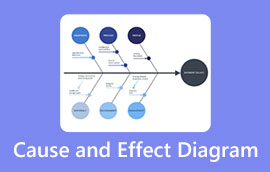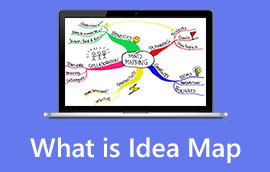What is Strategic Planning: Definition, Importance, Uses, & Tools
Strategic planning is a popular process used by many businesses. It is a method to inform your organization’s goals, team, and growth. Yet, if you’re new to it, you might find it challenging to begin with. Hence, you need to understand the strategic planning definition first. Apart from that, you should do it knowing its importance and uses. In that way, you can pick the right tool to use. So, in this article, we will walk you through the details that you need to know before developing the process. Besides, we have also provided a top-notch diagram maker for strategic planning.

- Part 1. What is Strategic Planning
- Part 2. Why is Strategic Planning Important
- Part 3. Uses of Strategic Planning
- Part 4. Strategic Planning Tools
- Part 5. Best Tool to Make a Diagram for Strategic Planning
- Part 6. FAQs About What is Strategic Planning
Part 1. What is Strategic Planning
What is a strategic plan? As its name implies, it is a plan that you can use as a strategy for your business growth. Strategic planning produces a strategic plan. So, strategic planning is a process that defines the future, goals, and objectives. It involves identifying the goals so that the business can reach its desired vision. Usually, it looks at the goals for the next three to five years, but it can be even longer. Unlike a business plan, it focuses more on short-term goals. Companies execute strategic planning every period. They do it to see the effect of changing their business industry or the laws that might affect them. That way, they can update their plan to fit these changes and stay on the right path.
Part 2. Why is Strategic Planning Important
Now that we have defined strategic planning, let’s move on to its importance. Businesses must have a clear direction and defined objectives to strive for. With that, strategic planning provides this essential guidance. Also, a strategic plan serves as a roadmap for achieving business objectives. Without it, there’s no way to keep track of the business reaching its goals. So, strategic planning is crucial because of the following:
◆ It provides a clear direction and outlines measurable goals.
◆ It helps you expect and respond to changes in a quick way.
◆ It reduces the potential waste of resources.
◆ It enables you to make decisions, so you’ll stay on top of the competition.
Part 3. Uses of Strategic Planning
1. Setting Clear Objectives
It provides a clear sense of direction and purpose for an organization. Without a strategic plan, an organization may lack a coherent vision. Hence, it is easier to lose focus on its goals and objectives.
2. Resource Allocation
Strategic planning helps in the efficient allocation of resources. The allocation includes time, money, and personnel. It ensures resources for activities that can achieve long-term objectives.
3. Adaptation to Change
It also allows you to expect and adapt to trends, challenges, and opportunities. In addition, your team or your organization will be able to stay quick and responsive.
4. Communication and Alignment
It ensures that all members of an organization are on the same page. Creating a shared vision and goals aligns the efforts of everyone. Thus, it promotes collaboration and teamwork.
5. Performance Measurement
A strategic planning framework measures progress and success. It sets clear standards and key performance indicators (KPIs). So the organization can scale its achievements and make necessary adjustments.
Part 4. Strategic Planning Tools
In this part, learn some of the common strategic planning tools:
1. SWOT Analysis
SWOT Analysis is a fundamental strategic planning tool. SWOT means strengths, weaknesses, opportunities, and threats. You can use it to identify each of these elements while relating it to your business. It also helps you learn new opportunities and know what needs improvement. Also, you’ll identify threats that can affect the success of your business.
2. PEST Analysis
In strategic planning, there's a tool called PEST analysis. It helps teams consider political, economic, cultural, and technological aspects when planning for business. In most cases, they add legal and environmental factors, making it a PESTLE analysis. To use PEST analysis well, you need people who know about these different factors. That way, they can give valuable insights and help make better plans.
3. Balanced Scorecard
The balanced scorecard is like a dashboard for your organization. It is another helpful strategic planning tool. It helps you keep track of different aspects of your performance. It measures financial success, customer satisfaction, internal processes, and learning and growth. This tool provides a balanced view of how well your organization is doing in different areas. At the same time, it guides you in making improvements where needed.
4. Porter’s Five Forces
Porter's Five Forces is also a crucial strategic planning tool. It helps organizations understand and assess the competitive forces in their industry. It examines five key factors. It includes competitive rivalry, the threat of new entrants and substitutes, and supplier and buyer power. By analyzing these forces, organizations can gain insights into their industry's competitiveness. It also helps you determine potential risks and opportunities. Thus, allowing you to develop strategies to thrive in the marketplace.
5. VRIO Framework
The VRIO framework is another powerful strategic planning tool. It evaluates internal resources and capabilities to determine its competitive advantage. Also, it assesses resources for their value, rarity, imitability, and organizational support. If a resource or capability has these qualities, it can provide a competitive edge. The VRIO framework helps organizations recognize what makes them unique. Finally, identify what gives them an advantage over competitors.
Part 5. Best Tool to Make a Diagram for Strategic Planning
Are you in search of a diagram maker for your strategic planning? Well, MindOnMap can assist you with that. Also, you can check out an example of a strategic planning diagram below made in this tool. Then, keep reading to learn more about MindOnMap.

Get a detailed strategic planning diagram.
MindOnMap is an exceptional tool for crafting any type of diagram. It is a web-based platform that you can access on Microsoft Edge, Google, Chrome, Safari, and more. With it, you can make strategic planning diagrams. It provides an intuitive way that lets you draw your strategic ideas, goals, and action plans. Further, you can create clear, interconnected diagrams that show your strategy's various components. Thus making it easy to understand and communicate with your team. Apart from strategic planning diagrams, you can create more charts here. It also provides various templates that you can choose and use for your needs. You can create treemaps, organizational charts, flowcharts, fishbone diagrams, and more.
Not only that, MindOnMap lets you personalize your diagrams. It provides a comprehensive set of elements and icons that you can use for your chart. You can add shapes, text boxes, lines, color fills, and so on. Another thing it also lets you add pictures and links to make your work understandable. One of the best features of it is its auto-saving feature. The tool saves all the changes you made after you stop operating on it for a few seconds. That way, you’ll prevent any data loss. What’s more, it offers a collaboration option. It means you can share your work on it with your peers, teams, or colleagues. Given these, MindOnMap is a perfect tool for teams and organizations.
Secure Download
Secure Download

Part 6. FAQs About What is Strategic Planning
What are the 5 steps in strategic planning?
The steps in strategic planning include:
1. Determine your current position.
2. Focus on your objectives.
3. Develop a strategic plan.
4. Put the plan into action and manage it.
5. Review and revise the plan as needed.
What are the 3 main activities of strategic planning?
There are three main activities of strategic planning. It includes strategic analysis, long-term planning, and action planning.
What is strategic planning with an example?
Strategic planning is a process where an organization sets specific goals. Then, they’ll create a plan to achieve those goals. For instance, a retail company might engage in strategic planning. They need to increase their online sales by 20% over the next three years. They would analyze market trends, competition, and internal capabilities. Next, they will develop a strategy. It may involve website improvements and marketing campaigns. There could also be customer engagement initiatives to reach their goal.
Conclusion
To wrap it up, you’ve learned why strategic planning is important. Not only that but also its definition, uses, and tools. Strategic planning is a vital tool for any organization. If you’re aiming for long-term success, you need to do this process. Now, if you want a strategic planning visual presentation, you have to create a diagram. With that, you can depend on MindOnMap. It offers a straightforward way to make any visual charts. Also, it lets you use it online and offline.










